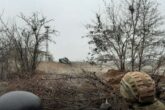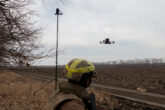March 22, 2017
For an Audience of One: Re-Booting Agenda SecDef
Since Jim Mattis accepted the role of secretary of defense, his proverbial rucksack has been loaded up with expectations: convincing President Trump that torture is not effective, defending American internationalism, keeping America’s alliances alive, saving the U.S. foreign aid budget and being the “adult in the room” on the National Security Council. These expectations are absurd and far beyond the writ of any normal secretary of defense. The policy, programming, personnel, process and unknown contingencies will be individually challenging. Managed together, they are staggering—even for someone whose call-sign was once “Chaos.”
Starting with policy, Mattis must oversee major operations against the Islamic State in Iraq and the Levant (ISIL), the ongoing mission in Afghanistan, and counterterrorism operations around the world. He is also responsible for positioning the Pentagon to respond adequately to Russia’s destabilizing activities against key European allies and partners and China’s increasingly assertive behavior across the Asia-Pacific, as well as contend with conventional and strategic challenges from less predictable regional spoilers like North Korea and Iran.
There are good and pressing reasons to enhance U.S. military posture in Europe, where Russia is moving quickly to consolidate control of Crimean and Eastern Ukraine, threaten its neighbors, undermine NATO and erode the democratic institutions of the broader West, to include the United States. To be sure, a more assertive military posture must be part of a whole-of-government response. In Asia, China is asserting greater influence over its neighborhood and will no doubt continue to use its military investments and posture to chip away at U.S. freedom of military action and maneuver. In the Gulf, the three-pronged challenge of destroying the Islamic State, countering Iran’s destabilizing activities, and determining the future of U.S. policy toward the Assad regime. And finally, America’s longest war — Afghanistan — continues to simmer, with U.S. commanders requesting troops increases to support the security assistance and counterterrorism missions there.
Read the full article at War on the Rocks.
More from CNAS
-
Defense / Transatlantic Security
When Defense Becomes Destruction: Austria-Hungary’s Mistake and Ukraine’s RiskThis article was originally posted on War on the Rocks. The southeastern Polish city of Przemyśl, with its elegant 19th century Habsburg-era train station, remains one of the ...
By Franz-Stefan Gady
-
Defense / Transatlantic Security
Ukraine’s Catch-22 MomentThis article was originally published in the Financial Times. In Joseph Heller’s wartime classic, Catch-22, the protagonist Yossarian seeks out the US army surgeon Doc Daneeka...
By Franz-Stefan Gady
-
CNAS Insights | Budgetary Own Goals Undermine “Speed and Volume”
On November 7, Secretary of Defense Pete Hegseth laid out a plan to overhaul the Department of Defense’s (DOD’s) acquisition system. Placing an emphasis on delivering new capa...
By Philip Sheers, Carlton Haelig & Stacie Pettyjohn
-
Drones: Who Is Making the New Weapons of War?
From Ukraine and Russia to Gaza and Sudan, drones have become a key weapon of war. Which companies are making them, and profiting from this rapidly expanding but controversial...
By Stacie Pettyjohn




